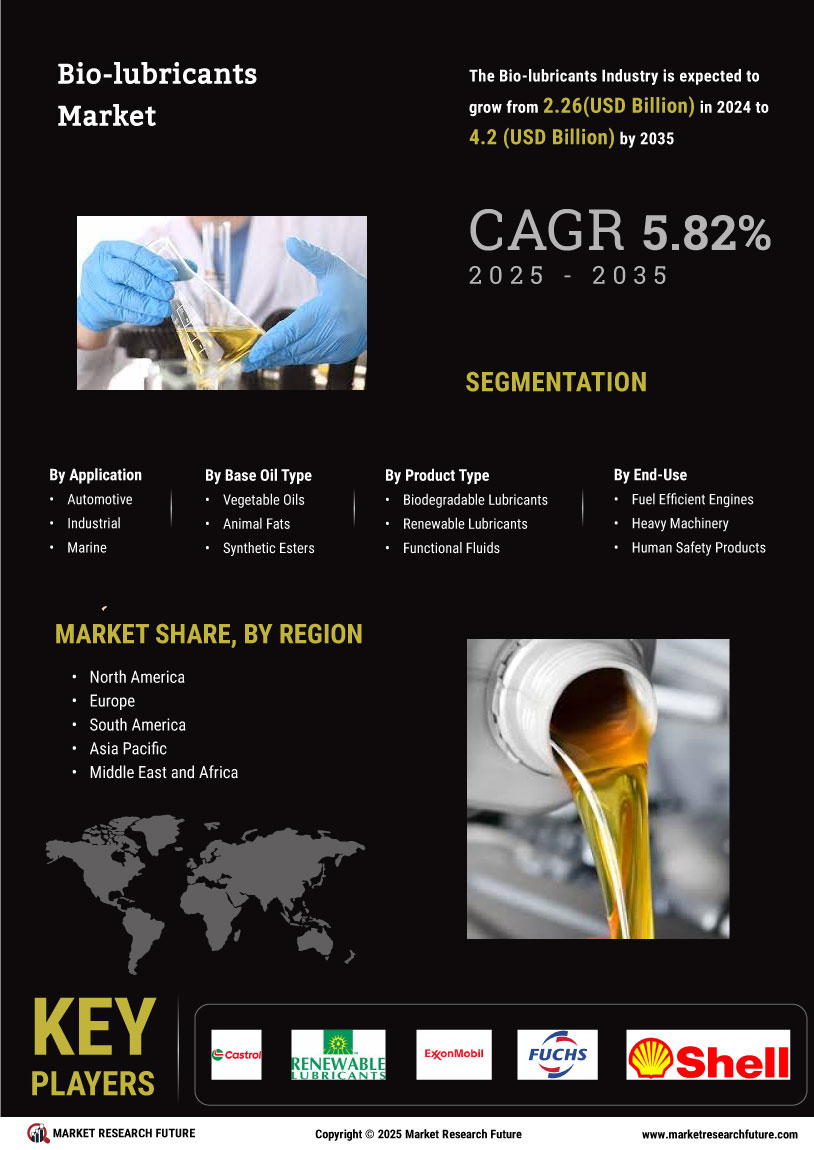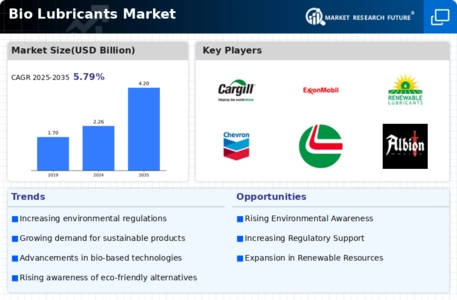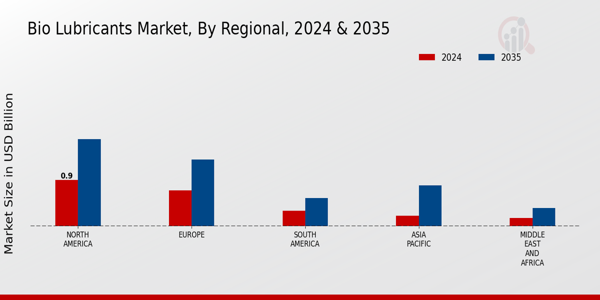Rising Industrial Applications
The Bio Lubricants Market is experiencing an expansion in industrial applications, which is contributing to its growth. Industries such as automotive, manufacturing, and agriculture are increasingly adopting bio lubricants due to their environmental benefits and performance characteristics. For example, bio lubricants are being utilized in hydraulic systems, gear oils, and metalworking fluids, where their biodegradable nature reduces the risk of environmental contamination. Market analysis indicates that the industrial segment is expected to account for a substantial share of the bio lubricants market, driven by the need for sustainable practices in various sectors. This trend suggests a promising future for bio lubricants in diverse industrial applications.
Regulatory Support for Bio-based Products
The Bio Lubricants Market is benefiting from a favorable regulatory environment that encourages the use of bio-based products. Governments across various regions are implementing policies and regulations aimed at reducing carbon emissions and promoting renewable resources. For instance, initiatives that provide incentives for the use of bio lubricants in industrial applications are becoming more prevalent. This regulatory support not only enhances the market potential for bio lubricants but also fosters innovation within the industry. As a result, manufacturers are likely to invest in research and development to create high-performance bio lubricants that comply with these regulations, further driving market growth.
Increasing Demand for Sustainable Products
The Bio Lubricants Market is experiencing a notable surge in demand for sustainable products. As consumers become more environmentally conscious, they are increasingly seeking alternatives to conventional lubricants that are often petroleum-based. This shift is driven by a growing awareness of the environmental impact of traditional lubricants, which can lead to soil and water contamination. According to recent data, the bio lubricants segment is projected to grow at a compound annual growth rate of approximately 5.5% over the next few years. This trend indicates a significant opportunity for manufacturers to innovate and develop bio-based lubricants that meet the rising consumer expectations for sustainability.
Technological Innovations in Bio Lubricants
The Bio Lubricants Market is witnessing a wave of technological innovations that are enhancing the performance and applicability of bio-based lubricants. Advances in formulation technologies are enabling the development of bio lubricants that offer superior lubrication properties, thermal stability, and biodegradability. These innovations are crucial as they address the performance concerns that have historically limited the adoption of bio lubricants in certain applications. Furthermore, the integration of nanotechnology and bioengineering is paving the way for the creation of next-generation bio lubricants. This technological progress is expected to expand the market reach of bio lubricants, making them more competitive against traditional lubricants.
Consumer Preference for Eco-friendly Products
The Bio Lubricants Market is significantly influenced by the growing consumer preference for eco-friendly products. As awareness of environmental issues increases, consumers are actively seeking products that align with their values, including lubricants that are derived from renewable resources. This shift in consumer behavior is prompting manufacturers to prioritize the development of bio lubricants that not only meet performance standards but also adhere to sustainability principles. Market Research Future indicates that a considerable percentage of consumers are willing to pay a premium for bio-based lubricants, reflecting a strong market potential. This consumer trend is likely to drive further innovation and investment in the bio lubricants sector.


















Leave a Comment